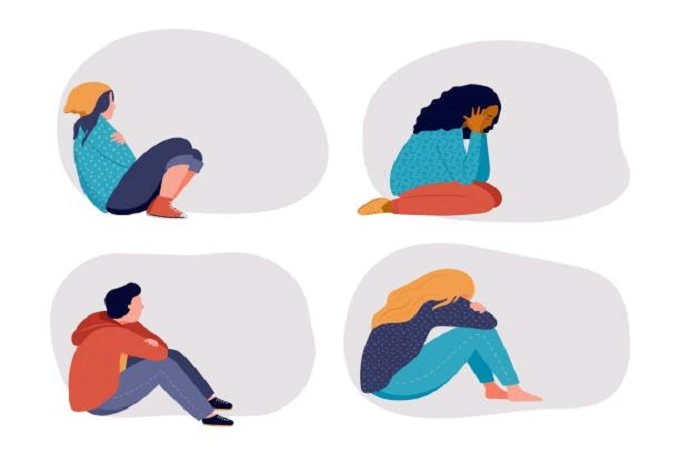Myths about emotional traumas that can harm you

Nowadays, there is a lot of talk about emotional traumas, their causes, and their consequences. Still, there were moments when they were considered insignificant and denied as a “real” problem. Misinterpretations, excessive generalizations, and incorrect conclusions often cause these fluctuations in attention. Unfortunately, this has given rise to many misconceptions that we may still encounter. In order not to fall for this bait and harm yourself, it’s time to learn about these misconceptions and the truth that debunks them.
7 myths about emotional traumas that can harm you
1. Injury is inevitable

Yes, we inevitably encounter unpleasant and overwhelming events at some point in our lives, but it is essential to distinguish between unfavorable and traumatic experiences. But not all moments in life will turn out to be injury triggers.
Adverse events can be equated to injury, but experiencing adversity does not necessarily lead to it. The belief that injury is inevitable can perpetuate feelings of helplessness and resignation that undermine resilience and the ability to navigate negative situations with confidence and perseverance.
The feeling of defeat that arises long before we encounter something unpleasant forces us to perceive any experience through negativity. It is important to remember that not every emotional difficulty will have a long-term effect on your nervous system. Unfavorable experiences are scratches you don’t pay much attention to, and traumatic ones are open wounds. It is essential to distinguish them from each other, not to undermine self-confidence, and not give up in the face of impending problems.
2. A particular serious event always causes an injury
It was once believed that people who have experienced trauma can always identify the event that caused it. However, this is not entirely correct. Emotional trauma can occur for reasons that cannot be put into one sentence or accurately explained. Visit. A F R I N I K. C O M. For the full article The feeling of insecurity and the fear leading to it are highly subjective, so it isn’t easy to generalize what causes our most intense defensive reactions. Even associations with unpleasant events from the past can cause new emotional trauma, so don’t assume that if you can’t explain it, then it doesn’t exist.
3. Only dramatic events lead to injury

Understanding what constitutes traumatization has long gone beyond extreme events and dramatic reactions. You can get emotional trauma if you encounter subtle but periodic painful experiences that gradually lead to feelings of loss, hopelessness, and isolation. They cause insecurity and fear, which are sometimes difficult to recognize. What one person finds traumatic may not even bother the other. It is a perception that shapes reactions to specific situations, regardless of the threat level, so all experiences are individual.
4. All events that activate the “Fight or flight” reaction are traumatic

A common misconception that should not be believed is that every case that triggers a “Fight or flight” reaction leads to injury. To begin with, we note that this reaction is an innate survival mechanism activated during situations perceived as a potential threat. But not every such situation ends in injury. As a rule, we return to equilibrium when the danger has passed, and the “Fight or flight” reaction has receded.
For example, when we are afraid of a rustle in the dark, we turn on the light and make sure that nothing terrible has happened, after which we calm down and sleep. Trauma occurs when we cannot return to a state of emotional balance. We are convinced that the threat has passed, but we remain in a prolonged state of stress and fear.
5. Trauma is experienced only by those who participated in what led to it
There is a phenomenon called “indirect trauma” — it occurs when you are not a participant in some unpleasant event but still experience a significant emotional response. Such trauma is often found in witnesses of crimes, as well as people who have taken someone else’s negative experience to heart. At such moments, the brain receives a danger message and activates survival mechanisms, as if you yourself are under threat.
6. Childhood neglect is as traumatic as violence

Violence and neglect have different effects on children. Physical and emotional bullying is directly traumatic, as it provokes a sense of fear of the potential next incident. The body is filled with stress hormones that can affect a child’s development and psyche. Neglect may not always be as noticeable or immediate in its effects, but it is destructive in the long run. It is not necessarily traumatic, but it significantly impacts how a child socializes, builds an opinion about himself and others, and interacts with others.
7. Emotional violence is not as destructive as sexual violence
When it comes to trauma, one should not forget that it has a subjective nature. Although emotional abuse does not cause physical damage, unlike sexual violence, it can leave deep psychological scars. It is not necessary to compare these traumatic events with each other, as they both lead to negative long-term consequences and destroy lives.




